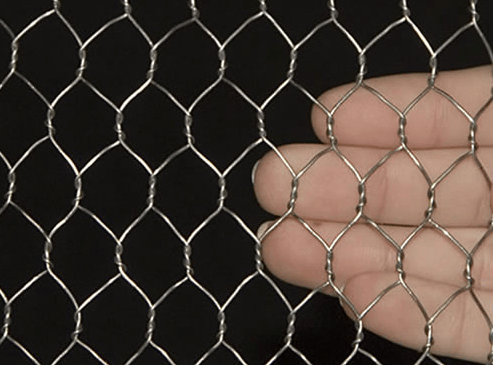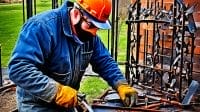As a poultry farmer or backyard chicken enthusiast, you know the importance of having a durable and reliable fencing solution. Enter stainless steel chicken wire, the perfect choice for those looking for longevity and rust-free properties.
Key Takeaways:
- Stainless steel chicken wire is a durable and long-lasting fencing option.
- The rust-free properties of stainless steel chicken wire make it ideal for outdoor use.
- Choosing high-quality chicken wire is essential for keeping your chickens safe and secure.
Why Choose Stainless Steel Chicken Wire?
When it comes to fencing needs, chicken wire is a popular choice for many applications. However, not all chicken wire is created equal. Stainless steel chicken wire offers many advantages over other materials, making it a smart choice for those looking for long-lasting and durable fencing solutions.
Firstly, stainless steel chicken wire is incredibly durable. It is resistant to rust and corrosion, which means it can withstand harsh outdoor elements without deteriorating or losing its shape. This makes it ideal for use in areas with high moisture or humidity levels, such as near the coast or in wet climates.
In addition to its durability, stainless steel chicken wire also boasts a long lifespan. Unlike other types of chicken wire, which can break down over time, stainless steel chicken wire can last for years without needing to be replaced. This makes it a cost-effective choice for those looking for a long-term fencing solution.
Finally, stainless steel chicken wire is also an environmentally friendly option. Because it lasts for such a long time, it doesn’t need to be replaced as often, reducing waste and saving resources in the long run.
Understanding the Stainless Steel Grades
Stainless steel chicken wire is available in different grades that vary in composition and properties. Understanding the differences between these grades can help you choose the right type of chicken wire for your specific needs.
One of the most commonly used grades for chicken wire is 304 stainless steel. This grade is durable, corrosion-resistant, and suitable for most applications. It contains between 18 and 20 percent chromium and 8 to 10.5 percent nickel. Another grade, 316 stainless steel, has a higher corrosion resistance due to the addition of molybdenum, which makes it ideal for use in marine environments or highly corrosive settings. This grade contains between 16 and 18 percent chromium, 10 to 14 percent nickel, and 2 to 3 percent molybdenum.
Additionally, some manufacturers offer a third grade, 201 stainless steel. It is a lower-cost option that is less corrosion-resistant than 304 or 316, but it still provides adequate protection in less demanding applications. It contains around 16 to 18 percent chromium, 3.5 to 5.5 percent nickel, and 5.5 to 7.5 percent manganese.
When deciding which grade of stainless steel chicken wire to use, consider the environmental factors and demands of your application. Choose a grade that matches the required corrosion resistance, strength, and durability needed for your specific project.
The Versatility of Stainless Steel Chicken Wire

Stainless steel chicken wire is not only a reliable and durable fencing option for your feathered friends, but its versatility extends beyond just that. Here are some other potential uses for this versatile material:
| Application | Description |
|---|---|
| Aviaries | Whether you have small birds or larger parrot species, stainless steel chicken wire is a sturdy material to form aviaries. The material can withstand the weight of the birds and can be used to cover the top of the aviary to keep predators or other dangerous birds away. |
| Animal Enclosures | You can use stainless steel chicken wire as a barrier for your furry pets too. It can be used to create a secure pet enclosure for your dogs, cats, rabbits, and other small animals. The wire mesh provides ventilation and sunlight, while keeping your pets confined. |
| Gardening | Stainless steel chicken wire can be used to create garden fences and trellises. The wire mesh can also be wrapped around young trees to protect them from being chewed by animals, while still allowing for water and sunlight to reach the tree. It can also be used to create wire cages for compost heaps, preventing them from spreading out of control. |
Conclusion
Stainless steel chicken wire is an excellent choice for fencing due to its durability and long lifespan, but it’s versatility extends far beyond just that. With its strength, rust-free properties, and resistance to corrosion, stainless steel chicken wire can be used for multiple purposes, making it a great investment for anyone in need of a durable material for various applications.
Factors to Consider When Choosing Stainless Steel Chicken Wire
Choosing the right stainless steel chicken wire for your specific needs requires careful consideration of several factors. Here are some important things you should keep in mind when shopping for chicken wire:
- Gauge: The gauge of the wire refers to its thickness. The lower the gauge number, the thicker and stronger the wire. For most general fencing needs, a gauge between 19 and 22 is sufficient. However, if you need extra durability or plan to use the wire for heavy-duty applications, consider choosing a lower gauge wire.
- Mesh size: The mesh size determines the size of the openings in the wire. For fencing applications, a mesh size of 2 inches by 2 inches or smaller is recommended. However, if you need to keep out smaller animals or birds, a smaller mesh size may be necessary.
- Coating: While stainless steel is already resistant to rust, some chicken wire comes with added coatings for extra protection. Consider whether or not you need a coated wire based on your specific application.
- Roll length: Chicken wire is typically sold in rolls of varying lengths. Consider the length of the area you need to cover to determine the appropriate roll length.
- Installation options: Some chicken wire comes with specific installation options, such as pre-formed edges or built-in posts. Consider whether or not these options are necessary or beneficial for your specific application.
By considering these factors and choosing a high-quality stainless steel chicken wire, you can ensure a long-lasting and effective fencing solution for your needs.
Installation Tips for Stainless Steel Chicken Wire
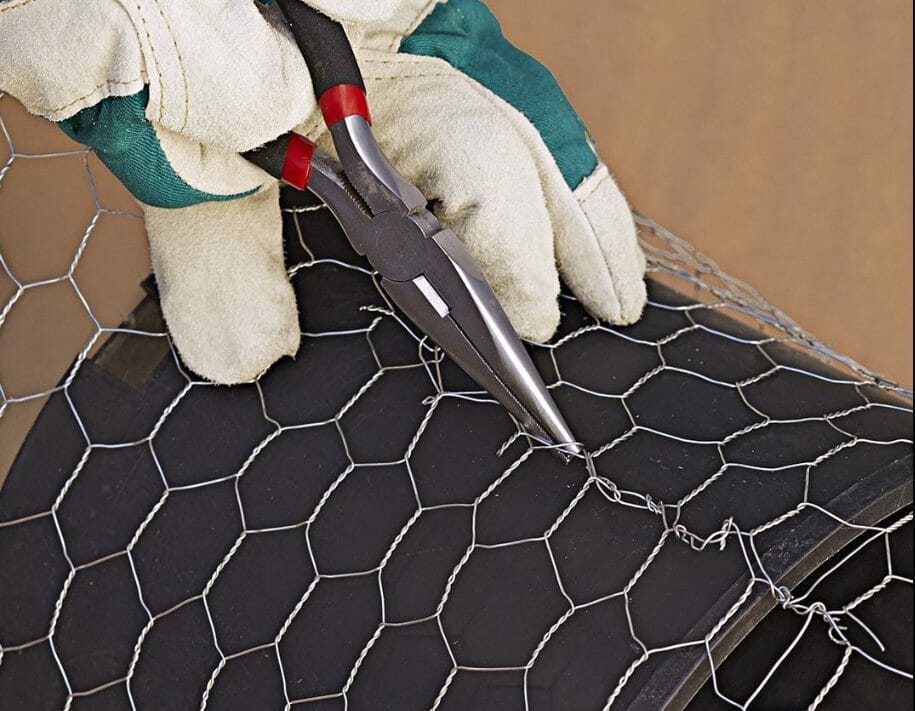
Installing stainless steel chicken wire requires just a few tools and some basic DIY skills. Here are some tips to ensure your installation is successful:
- Prepare the area: Clear any debris or obstacles from the area where the fence will be installed. This will make it easier to work and ensure a smooth installation.
- Measure twice: Take accurate measurements of the area where the fence will be installed, ensuring that you have enough chicken wire to cover the entire area. Remember to take into account any extra needed for overlaps or corner bends.
- Use the right tools: A pair of wire cutters and pliers will make cutting and shaping the wire much easier. Gloves will help protect your hands from the sharp edges.
- Secure the fence: Chicken wire can be attached to posts, trees, or other sturdy structures using galvanized staples or zip ties. Make sure to space them evenly and secure them firmly to prevent sagging or gaps.
- Overlap the wire: Overlap the chicken wire at least 1 inch to prevent animals from pushing through gaps. Use pliers to twist the overlapped sections together for extra stability.
- Trim excess: After installing the fence, trim any excess wire with wire cutters to create a neat and tidy finish.
- Inspect regularly: Regularly check the fence for any damage or signs of animals trying to break through. Repair any damage as soon as possible to ensure the longevity and effectiveness of the fence.
By following these tips, you can ensure a secure and effective installation of your stainless steel chicken wire fence.
Maintaining and Cleaning Stainless Steel Chicken Wire

Proper maintenance of stainless steel chicken wire is crucial to ensure its longevity and durability. Follow these tips to keep your fencing solution looking and functioning at its best:
Regular Inspection
Inspect your chicken wire regularly to identify any signs of damage or wear. Look for rust, tears, or loose wires that may compromise the effectiveness of the fencing. Regular inspection allows you to catch and address any issues before they become more significant problems.
Cleaning
Clean your stainless steel chicken wire periodically to remove any debris or dirt that has accumulated. This can be done easily with a hose and mild detergent. Avoid using harsh chemicals or abrasive tools that may scratch or damage the surface of the wire.
Preventative Measures
To prevent damage to your chicken wire, take measures to protect it from external factors such as weather and animals. Consider using a top rail or covering the wire with shade cloth to protect it from sunlight and harsh weather. Additionally, keep animals away from the fence by creating a buffer zone or using scare tactics such as noise makers or decoys.
Repairs
If you notice any damage or wear on your chicken wire, make repairs promptly to prevent further damage. This may involve replacing individual wires or sections of the fence. Always use stainless steel materials when making repairs to maintain the integrity of the fence.
Stainless Steel Pulleys for Wire Rope
When it comes to wire rope systems, choosing the right pulleys is essential for optimal performance and safety. Stainless steel pulleys offer a durable and corrosion-resistant solution that can withstand even the harshest conditions. Here at StainlessSteel-Group.com, we provide high-quality stainless steel pulleys for a range of applications.
Applications of Stainless Steel Pulleys
Stainless steel pulleys are commonly used in various industries, such as marine, construction, and transportation. They are also suitable for outdoor and indoor applications, including:
- Lifting and rigging equipment
- Hoisting systems
- Sailing and boating
- Industrial and agricultural machinery
Choosing the Right Stainless Steel Pulleys
When selecting stainless steel pulleys for wire rope, there are several factors to consider:
- Load capacity: Ensure the pulleys’ load capacity matches the requirements of the wire rope system.
- Pulley design: Choose a pulley design that is suitable for the intended use and the type of wire rope.
- Rope compatibility: Consider the diameter and construction of the wire rope to ensure it is compatible with the pulley.
Installation Tips for Stainless Steel Pulleys and Wire Rope
Correct installation of stainless steel pulleys and wire rope is crucial for their optimal performance and safety. Here are some installation tips:
- Ensure the pulley is securely attached: Use proper fasteners and ensure the pulley is mounted on a stable and suitable surface.
- Align the pulley: Ensure the pulley is aligned with the wire rope to minimize friction and prevent rope damage.
- Properly tension the wire rope: Make sure the wire rope is properly tensioned to avoid slippage and unnecessary wear on both the rope and the pulley.
Maintaining and Inspecting Stainless Steel Pulleys and Wire Rope
To ensure the longevity and reliability of stainless steel pulleys and wire rope systems, regular maintenance and inspection are necessary:
- Check for signs of wear and tear regularly.
- Regularly lubricate the pulley to minimize friction and reduce wear on the rope and pulley.
- Inspect the wire rope regularly for any deformation, kinks, or cuts.
By following these best practices, choosing high-quality stainless steel pulleys, and regularly inspecting and maintaining your wire rope systems, you can ensure their optimal performance and long lifespan.
Choosing the Right Stainless Steel Pulleys for Wire Rope
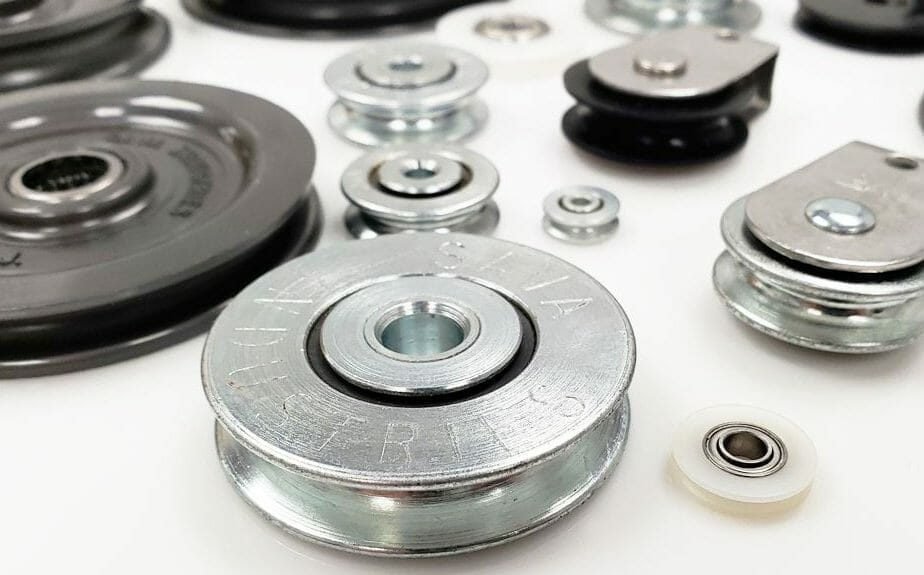
When selecting stainless steel pulleys for wire rope, it is important to consider several factors to ensure safe and efficient operation. Here are some key considerations:
- Load capacity: Choose a pulley with a load capacity that exceeds the weight of the load it will be carrying.
- Pulley design: Select a pulley with a design that is suitable for the intended application, such as a single or double sheave pulley.
- Rope compatibility: Ensure that the pulley is compatible with the diameter and type of wire rope being used, and that it has a groove size that matches the rope diameter.
- Corrosion resistance: Look for pulleys made from high-quality stainless steel that can withstand exposure to harsh environments without rusting or corroding.
- Ease of installation: Choose a pulley that is easy to install and maintain, and that comes with clear instructions.
By taking these factors into account when selecting stainless steel pulleys for wire rope, you can ensure that your system operates safely and efficiently, and that it lasts for many years to come.
Installation Tips for Stainless Steel Pulleys and Wire Rope
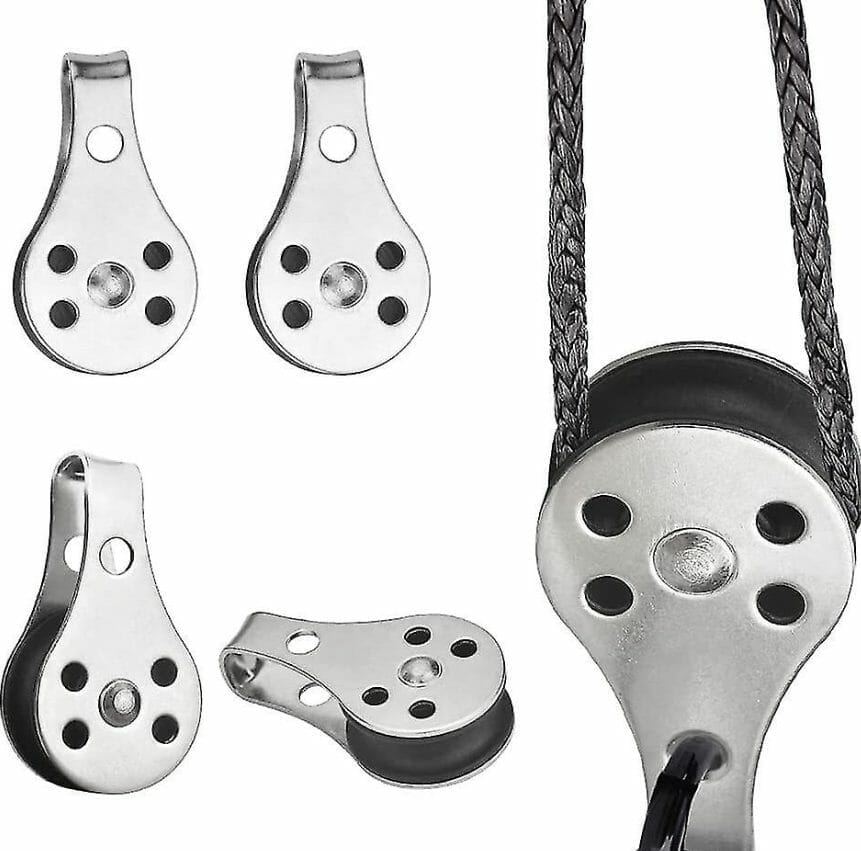
When it comes to installing stainless steel pulleys and wire rope, it’s important to take the time and care necessary to ensure a safe and effective setup. Here are some helpful tips to keep in mind:
- Choose the right pulleys: Make sure to select pulleys that are appropriate for the intended load capacity and compatible with the wire rope you are using.
- Prepare the surface: The surface where the pulley will be mounted should be clean, flat, and free of any burrs or sharp edges that could damage the rope.
- Securely attach the pulley: Use a strong, reliable method to securely attach the pulley to the mounting surface, such as bolts or screws that are appropriate for the specific surface and load requirements.
- Install the wire rope: Take care to properly thread the wire rope through the pulley, making sure it is not twisted or damaged in the process.
- Tension the wire rope: Once the wire rope is installed, carefully tension it to the appropriate level for the intended application, taking care to not over-tighten and cause damage.
- Regularly inspect: Make sure to regularly inspect the pulleys and wire rope for signs of damage, wear, or corrosion, and promptly address any issues that arise.
By following these tips, you can ensure that your stainless steel pulleys and wire rope are installed safely and correctly for optimal performance and longevity.
Maintaining and Inspecting Stainless Steel Pulleys and Wire Rope
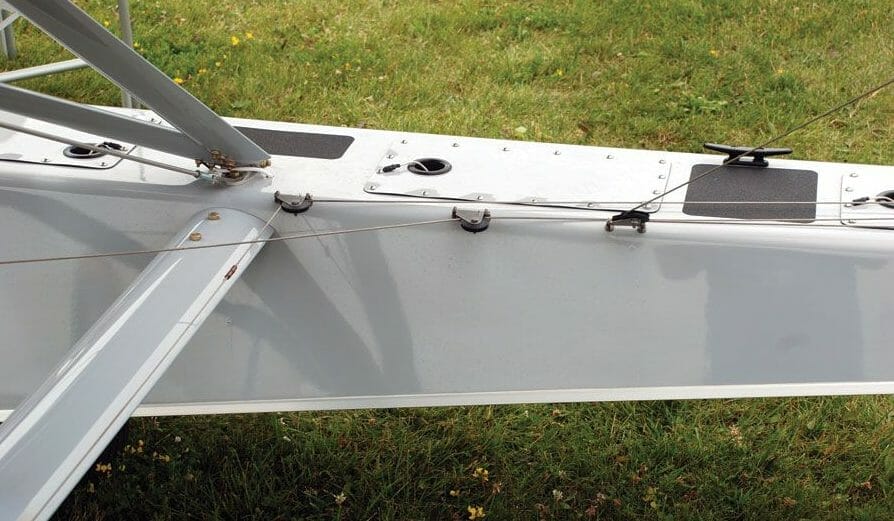
Maintaining and inspecting stainless steel pulleys and wire rope is crucial to ensure their longevity and safety. Here are some tips on how to properly maintain and inspect your equipment:
- Regularly check the pulley’s load capacity to ensure it is not being overloaded.
- Inspect the pulley’s design to ensure it is suitable for your application.
- Check the compatibility of the rope with the pulley.
- Clean the pulley regularly to prevent the build-up of dirt and debris.
- Inspect the wire rope for any signs of wear, including kinking, crushing, or fraying.
- Check the wire rope’s load capacity to ensure it matches the pulley’s load capacity.
- Regularly lubricate the wire rope and pulley to prevent corrosion and rust.
- Inspect the attachment points to ensure they are securely fastened.
- Check for any signs of corrosion or damage on the pulley and wire rope.
By following these tips, you can help ensure the longevity and safety of your stainless steel pulleys and wire rope.
Read More : High-Quality Stainless Steel Pulleys for Wire Rope
Conclusion
When it comes to fencing needs, choosing the right material is essential for durability, longevity, and reliability. In this article, we have highlighted the numerous benefits of using stainless steel chicken wire, including its rust-free properties and long lifespan, making it an ideal solution for both residential and commercial applications.
It’s also important to note the versatility of stainless steel chicken wire, which can be used for a variety of purposes beyond fencing, including aviaries, animal enclosures, and gardening. However, selecting the right grade of stainless steel and understanding the important factors to consider, such as gauge and mesh size, is crucial for achieving the desired level of effectiveness and security.
Additionally, stainless steel pulleys for wire rope are a great option for those looking for a durable, corrosion-resistant solution for hoisting and lifting. Selecting the appropriate pulley design and rope compatibility, as well as following proper installation and maintenance practices, will ensure a safe and effective system.
In conclusion, stainlesssteel-group.com offers high-quality stainless steel chicken wire solutions and pulleys for wire rope that are designed to meet the most demanding requirements and specifications. Choosing their products can provide a reliable and long-lasting solution for your fencing and hoisting needs.
What are the Benefits of Using Stainless Steel Wire Mesh for Chicken Wire?
Stainless steel wire mesh offers numerous benefits when used as chicken wire. It provides exceptional strength and durability, ensuring the safety and security of poultry. Its corrosion-resistant properties make it ideal for outdoor applications, and its small openings prevent birds from escaping or predators from entering. Moreover, stainless steel wire mesh is easy to clean and maintain, making it a practical choice for chicken coops or run areas.
FAQ
Q: Why should I choose stainless steel chicken wire?
A: Stainless steel chicken wire offers numerous benefits, including its durability, rust-free properties, and long lifespan. It is an ideal choice for fencing needs.
Q: What are the different grades of stainless steel used in chicken wire?
A: Stainless steel chicken wire is available in various grades, each with its own characteristics and suitability for different applications.
Q: What are the applications of stainless steel chicken wire beyond fencing?
A: Stainless steel chicken wire is versatile and can be used in aviaries, animal enclosures, gardening, and more.
Q: What factors should I consider when choosing stainless steel chicken wire?
A: Important factors to consider include gauge, mesh size, and installation options.
Q: How do I correctly install stainless steel chicken wire?
A: Follow our step-by-step instructions and helpful tips for a secure and effective fencing solution.
Q: How do I maintain and clean stainless steel chicken wire?
A: Proper maintenance and cleaning techniques will keep your stainless steel chicken wire looking and functioning at its best.
Q: What are the applications of stainless steel pulleys for wire rope?
A: Stainless steel pulleys for wire rope are used for various purposes, offering durability and resistance to corrosion.
Q: What factors should I consider when choosing stainless steel pulleys for wire rope?
A: Important factors include load capacity, pulley design, and compatibility with the rope.
Q: How do I correctly install stainless steel pulleys and wire rope?
A: Follow our instructions and tips for optimal performance and safety during installation.
Q: How do I maintain and inspect stainless steel pulleys and wire rope?
A: Regular maintenance and inspection practices are essential to ensure the longevity and reliability of your stainless steel pulleys and wire rope systems.
